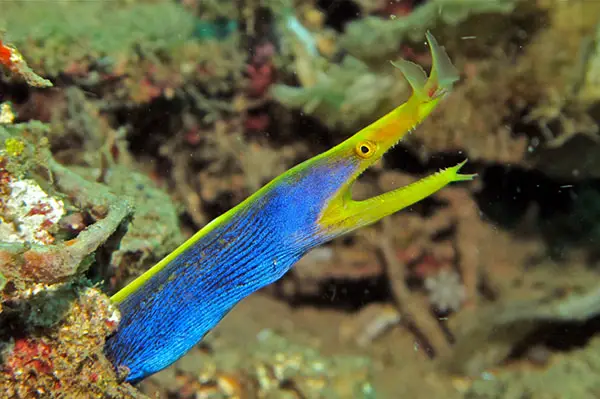Genus: Sphyrna (Most Hammerhead shark). The winghead on the other side is placed in its genus known as Eusphyra.
Family: Sphyrnidae (named after the peculiar and different structure of their heads, flattened and laterally elongated into a hammer shape known as Cephalofoil).
Species of Hammerhead Shark
There are nine different species of the hammerhead shark. Most people think there is just one species, which isn’t true.
Different species of sharks, including:
- The smooth hammerhead shark
- The great hammerhead shark
- The smalleye hammerhead shark
- The scalloped hammerhead shark
- The bonnethead
- The scoophead
- The whitefin hammerhead shark
- The winghead shark
- Scalloped bonnethead
Hammerhead sharks can be found in warm tropical waters, temperate waters, reefs, continental shelves, deep Sea, polar Sea, intertidal zone, and open ocean worldwide. In the summer season, they perform the mass migration looking for cold water.

Size and shape
It is a bit difficult to distinguish most sharks from each other, but not the hammerhead shark. A clear picture of it gives you a pictorial understanding of what you’re dealing with. The head has a particularly unusual shape. The dorsal fins are additionally pointed and tall, which can use to distinguish from other species of Sharks.
The Great Hammerhead shark is the largest of all the species of hammerhead sharks. It has the longest recorded reaching 20 feet long, which tends to be longer than you can imagine. It also weighs roughly 1000 pounds, and small sizes are most common as well. Other species of the hammerhead sharks are about 11 feet long and weigh around 500 pounds. Usually, a female one is larger than a male shark. However, males get mature earlier. The coloration of the Great Hammerhead Shark varies from gray-brown to light green on their backs, including dorsal fins and tail.

Unique vision
Hammerhead has a unique vision because of its unusual head shape, which allows it to see better than other sharks. Most people wonder why the form of the shark is like that. They are indeed unique because they don’t use each eye separately, just like most fishes do; instead, they use both eyes like humans. The wider apart the eyes are open, the excellent the range of their vision. Amazingly, hammerhead sharks have an incredible 360- degree range of view. Therefore hammerhead shark can see everything around them at all times, even if it is above, behind, in front, below them they see it all, which gives them privilege in hunting for prey and getting away from predators. Their ventral side is off white.

Reproduction in hammerhead sharks.
A female shark gives birth to live young. Therefore they show a viviparous mode of reproduction. Viviparous means that female hatch fertilized egg while still in the mother’s uterus. When she is ready for delivery, she gives birth to live cub. A male shark comes to the female one at least once a year and continuously bites her until she accepts to mate. After mating, the female becomes pregnant for a few weeks to several months, but that will depend on the species. As an example, more massive sharks are typically having a long pregnancy period. Because they give birth to more pups.
A medium-sized hammerhead shark gives birth to 12 – 15 pups. Smaller shark gives birth to fewer pups, and pregnancy periods last for a few weeks. A great hammerhead shark can give birth to as many 55 pups. Usually, Pups are 50-70 cm in length, and they feed on small fish, crabs, and squids.

Behavior of Hammerhead Shark
In most cases, hammerhead sharks behave as herds. Some individuals are lonely because they live and hunt alone. However, some hammerhead sharks prefer living and hunting in groups called schools. This method is most familiar among the Scalloped hammerhead sharks. In some ocean areas, hundreds of fishes are swimming and hunting together just under the water surface of the Sea. In this school, it may consist of hundreds of individuals.
Shark diet
The hammer-like shape of the head means that the sharks can have their prey virtually. Hammerhead sharks enjoy eating stingray fish, which is not easy to find in a natural environment. Because with their completely flat body shape, they can lie on the sea bed and completely camouflage themselves. Hammerhead sharks are ready to go the extra mile to get this meal. Hammerhead sharks swim close to the ocean floor in search of this meal buried in the sand. When they eventually find one, they mooch it, pin it down with their heads and eat it. Hammerhead sharks also eat fish, squid, octopus, and crustaceans. These sharks prefer to hunt in dawn and dusk as twice a day. In some situations, Great hammerhead sharks predation on the same kind of smaller sharks. Hammerhead shark usually doesn’t target humans as their prey.






